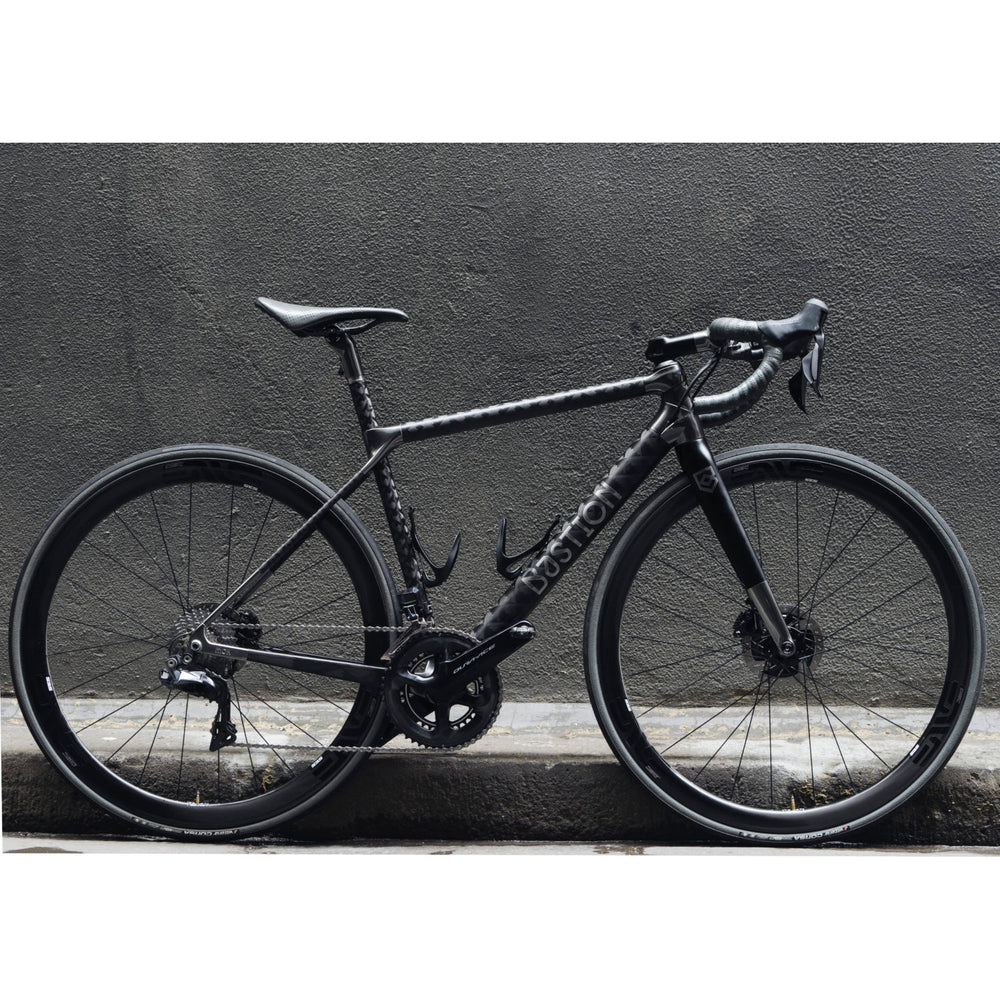
To facilitate the internal routing a D-shaped fork steerer tube has been used, but unlike other D-shaped steerer systems, the matching bore in the stem is also D-shaped. Although extremely challenging from a technical perspective we are glad we persisted and the evidence is in the beauty of the end product.” James Woolcock, Engineering Director at Bastion provided additional details: “Even though most systems on the market use a larger 1.25” upper headset bearing we felt this was too much of a compromise on the visual weight at the top of the bike and not something we wanted to accept. Unlike many similar products on the market, their system utilizes a more traditional 11/8” upper headset bearing resulting in a more svelte and refined aesthetic and enabling them to maintain the existing styling of their bikes. The icing on the cake so to speak has been the ability to hide all the hoses and wiring which is something customers are increasingly asking for as it creates a much cleaner aesthetic and also delivers a small aerodynamic advantage.” The new cockpit and the addition of our breakthrough technology to the fork and bar-stem extends the same beautifully refined and smooth ride quality to the front of the bike, matching the rear. To date, we have made use of aftermarket carbon fiber forks and bar-stems and we have felt there is a small, but noticeable disconnect in the ride quality between the front and rear of the bike. Now we can use whatever fork offset we need between 40 and 55mm depending on the design. Especially on smaller frames the limits on the fork offset can inhibit achieving this optimized handling condition while maintaining toe clearance. However, hiding the hoses and wiring for an appearance benefit has been something which has increasingly been requested of them by their client base in recent months.īen Schultz, Managing Director, Bastion explained further: “When we are designing a custom bike for someone, fork offset and head tube angle are two of the most important variables in getting the bike to handle the way we would like and the customer expects. The Australian company just unveiled the latest development at the Handmade Bicycle Show Australia (HBSA) in Melbourne: a fully integrated 3D printed bicycle cockpit system incorporating an internally routed fork and one-piece bar-stem made entirely in-house at their facility in Fairfield, Australia.įor several years the company has been planning to create such a system, citing the ability to tune the fork offset for further optimized handling for each rider and further improved front-end ride quality through controlled flex and damping characteristics as the main motivation for the development. With a bit of extra brawn, chromoly tubing can be butted and achieve the same strength, with less weight.Since 2016, Bastion Cycles as been a pioneer in applying 3D print ing to custom bicycle production (with internal Renishaw metal systems). Like aluminium tubing, steel can be butted, meaning wall thickness can vary over the length of the tube. Hi-tensile tubing tends to be found on lower-end bikes and is generally weaker than chromoly, meaning more needs to be used to achieve the same strength.

This tubing is made from a variety of different grades of steel, but they can be divided into two camps, hi-tensile and chromoly tubing. The vast majority of steel bikes are made with Reynolds or Columbus tubing. The most common method used is TIG (tungsten inert gas) welding.

Welding, on the other hand, melts both the filler material and the ends of the tubing, then when everything cools to room temperature, they are a single form. Lugged bikes are not only steel, Colnago has been making lugged carbon road bikes for many years, while bespoke makers like Australian outfit Bastion cycles use 3D-printed titanium lugs and filament-wound carbon tubing. Lugs reinforce the joint and distribute the filler material over a larger area through capillary action - some custom builders shape the ends of lugs into decorative forms to add their own flair. In lugged frames, the tubing is inserted into a sleeve and then brazed in place.


 0 kommentar(er)
0 kommentar(er)
